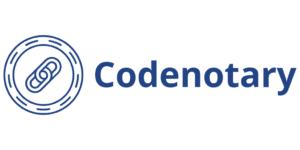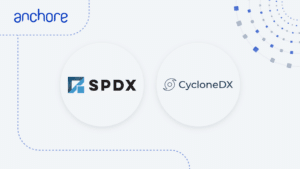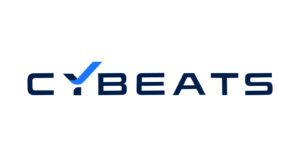Top 12 Open Source Code Security Tools
Open source software is everywhere. From your server to your fitness band. And it’s only becoming more common as over 90% of developers acknowledge using open
Imagine this: you’re a developer working on a critical software application that thousands of people use daily. You’ve spent countless hours writing and testing code and are proud of what you’ve created. But as the application grows more complex and new features are added, you worry about potential security risks. How can you be sure that every component and dependency is secure and up-to-date? It’s a daunting task that can keep you up at night.
Moreover, in today’s fast-paced software development environment, strong supply chain security is more critical than ever. Log4j is an example of this, with over 800,000 attacks in the first 72 hours of the breach. This impacted thousands of organizations worldwide, leaving developers under immense pressure to ensure that their applications are secure and free from vulnerabilities. This is why the Software Bill of Materials (SBOM) is a critical tool for application security. Let’s look at the top 10 SBOM tools that you can use to enhance your application security in 2023.
SBOM is a document describing all the software components and their dependencies used in an application, including open-source libraries and third-party software. SBOMs play a critical role in application security by providing developers with a clear and accurate view of the components used in their applications, their dependencies, and any potential vulnerabilities they may contain.

SBOM tools can help developers to:
While SBOMs were once considered an afterthought in software development, they are now a must-have for many organizations. President Biden’s recent executive order mandates the use of SBOMs for all software products developed for the government, highlighting their critical role in ensuring the security and resilience of critical infrastructure. Key capabilities you should consider when looking for an SBOM tool include:

FOSSA’s SBOM solution automatically detects and catalogs all open-source components used in the application and generates a detailed bill of materials, with complete visibility into each component’s licensing and compliance status. It also offers continuous monitoring, alerting developers to any changes in the components used in their codebase, and integrates with popular tools such as GitHub, Bitbucket, and Jira, making it easy for DevOps teams to manage SBOM within their existing workflows.
But what makes it unique is its ability to identify an application’s dependencies, even if they are hidden or difficult to detect. Plus, it’s designed to scale with the needs of large organizations.
Best for: Software development teams using a wide range of programming languages and frameworks

Spectral is a developer-focused solution acting as a control plane over source code and other developer assets. It enables developers to supercharge their CI/CD by automating the processes of secret protection at build time. It monitors and detects API keys, tokens, credentials, and security misconfigurations in real time and automates identifying and remediating vulnerabilities in third-party dependencies. The tool also eliminates public blindspots by continuously uncovering and monitoring supply chain gaps and proprietary code assets across multiple data sources.
In addition to the benefits mentioned above, the tool provides a map that gives a comprehensive view of all third-party and OSS code dependencies throughout the codebase, which helps gain insights into the dependencies’ vulnerability and exploitability. Spectral’s SBOM tool also identifies and classifies open-source dependency risk using the CheckPoint ThreatCloud threat intelligence platform, which accounts for exploitability, package maintenance history, typosquatting, account jacking, or the presence of malicious code like crypto miners and backdoors. This feature helps developers to stop potentially malicious code from being downloaded and keep it out of their applications and pipelines.
Best for: Small to medium-sized businesses with a focus on open-source software security

Jit is primarily a DevSecOps orchestration platform that simplifies integrations with open-source security tools. While it does offer some SCA capabilities, it is not strictly an SCA tool.
Regarding its capabilities as an SBOM tool, Jit’s automated vulnerability scanning and license management capabilities can help developers create a more accurate and comprehensive SBOM. It can identify and manage open-source components and their dependencies, thus indirectly helping generate an SBOM for the application. Developers can leverage Jit’s automated scanning capabilities to identify vulnerabilities in their application’s software components and ensure that their SBOM accurately reflects the software used.
Best for: Developers looking for a simple and easy-to-use SBOM solution

Codenotary is a software supply chain security solution helping organizations manage their SBOMs and secure their SDLC by using blockchain technology to create a tamper-proof and auditable record of the components and dependencies.
It supports open-source and proprietary codebases and integrates with various development tools and platforms. It also offers detailed reporting and analysis capabilities, making it easy to track the provenance and usage of all components within an application.
Best for: Organizations seeking a secure and immutable SBOM solution

JFrog provides a Software Composition Analysis (SCA) tool with SBOM generation capabilities that gives developers an effective way to manage the security of their software supply chains. Software Composition Analysis (SCA) and SBOM are closely related as SCA is the process of identifying and tracking software components used in an application, and SBOM is the outcome of that process. In other words, SCA is a way to gather information about software components, while SBOM is a formal record of that information. By using SCA, developers can identify and mitigate risks in their third-party dependencies, ensuring the security of their applications. At the same time, the SBOM generation half integrates with popular build and development tools, enabling developers to incorporate SBOM generation into their development workflows seamlessly.
JFrog’s Xray is popular in the developer community for its ability to automatically provide a comprehensive and accurate SBOM for software artifacts stored in JFrog Artifactory. The tool also provides insights into component vulnerabilities and the latest security patches, helping developers quickly remediate security risks.
Best for: Large enterprises with complex software supply chains

Anchore is an SBOM-powered software supply chain security platform that generates an accurate SBOM, scans for vulnerabilities, tracks compliance, and monitors risk across the application lifecycle. It provides detailed information on all components in the software supply chain, including their origin, licensing, and version history. Anchore’s policy engine allows teams to automatically define and enforce custom policies, ensuring that applications meet regulatory and compliance requirements.
Best for: Organizations with a focus on container security

Cybeats is a cybersecurity platform providing automated SBOM management features for IoT and embedded devices. The platform continuously monitors device firmware and software, detecting and mitigating real-time vulnerabilities. Its SBOM solution allows developers to easily generate an accurate bill of materials, including all software and hardware components, with a clear view of their dependencies. It also helps developers assess and manage third-party risks by analyzing the vulnerabilities and licenses of each component.
Best for: IoT device manufacturers and developers with a focus on device security

Endor Labs automates the generation of SBOMs with an intuitive user interface. Developers can easily create, view, and manage their SBOMs, enabling them to identify and mitigate potential security risks before deployment. The tool integrates with existing DevOps workflows and continuously monitors software components to ensure that new vulnerabilities are promptly identified and addressed. It also offers an audit trail that helps organizations meet compliance requirements by demonstrating that they have taken the necessary steps to secure their software supply chain. Developers can generate SBOMs in SPDX or CycloneDX formats.
Best for: Organizations of all sizes seeking a comprehensive SBOM solution with built-in compliance features

Rezilion provides automated SCA and dynamic SBOM generation capabilities. It analyzes an application’s codebase and identifies all third-party components and their dependencies, resulting in detailed reports with information about each component, such as version number, license, and known vulnerabilities. It integrates with popular CI/CD tools such as Jenkins, GitHub Actions, GitLab CI/CD, CircleCI, and Azure DevOps, enabling up-to-date SBOM reports to be generated at any stage of the SDLC.
Best for: DevOps teams looking for automated and dynamic SBOM generation

SPDX SBOM Generator automates the generation of SBOM in the widely-used SPDX format. The tool supports various programming languages and frameworks, including Java, Python, Go, and Node.js, making it versatile for multiple use cases. With it, users can generate SBOMs for both source code and binaries. The tool is open-source and community-driven, allowing contributions and updates from developers and organizations worldwide and ensuring the tool is continually evolving to meet the changing demands of the software industry.
Best for: Organizations seeking a customizable and open-source solution for generating SBOMs
The SBOM tools discussed above are designed to help developers easily generate and audit their SBOMs, giving them better visibility into their applications’ inner workings and reducing security risks. It’s easy to see why SBOM has become a crucial component in ensuring application security and compliance in today’s rapidly-evolving digital landscape.
But security is a moving target, with new tools and technologies released frequently. Take advantage of our free resources and stay up-to-date on the latest intelligent tools for side-stepping DevSecOps issues at ease.

Open source software is everywhere. From your server to your fitness band. And it’s only becoming more common as over 90% of developers acknowledge using open

It’s easy to think that our code is secure. Vulnerabilities or potential exploits are often the things we think about last. Most of the time, our

Experiencing a data breach is never pleasant. Just ask any of the hundreds of businesses that suffered a data breach in the past year, exposing billions